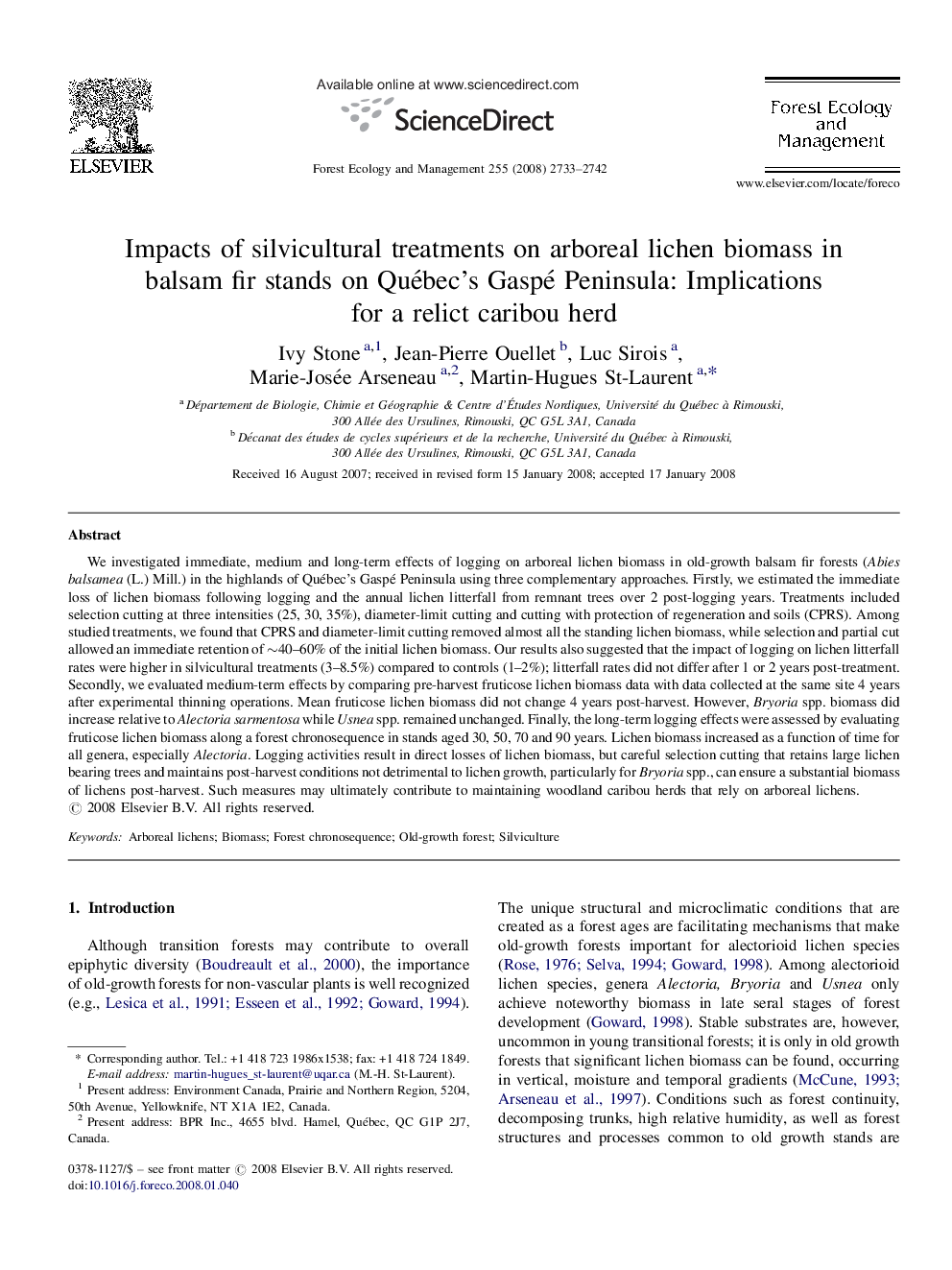| Article ID | Journal | Published Year | Pages | File Type |
|---|---|---|---|---|
| 89409 | Forest Ecology and Management | 2008 | 10 Pages |
We investigated immediate, medium and long-term effects of logging on arboreal lichen biomass in old-growth balsam fir forests (Abiesbalsamea (L.) Mill.) in the highlands of Québec's Gaspé Peninsula using three complementary approaches. Firstly, we estimated the immediate loss of lichen biomass following logging and the annual lichen litterfall from remnant trees over 2 post-logging years. Treatments included selection cutting at three intensities (25, 30, 35%), diameter-limit cutting and cutting with protection of regeneration and soils (CPRS). Among studied treatments, we found that CPRS and diameter-limit cutting removed almost all the standing lichen biomass, while selection and partial cut allowed an immediate retention of ∼40–60% of the initial lichen biomass. Our results also suggested that the impact of logging on lichen litterfall rates were higher in silvicultural treatments (3–8.5%) compared to controls (1–2%); litterfall rates did not differ after 1 or 2 years post-treatment. Secondly, we evaluated medium-term effects by comparing pre-harvest fruticose lichen biomass data with data collected at the same site 4 years after experimental thinning operations. Mean fruticose lichen biomass did not change 4 years post-harvest. However, Bryoria spp. biomass did increase relative to Alectoriasarmentosa while Usnea spp. remained unchanged. Finally, the long-term logging effects were assessed by evaluating fruticose lichen biomass along a forest chronosequence in stands aged 30, 50, 70 and 90 years. Lichen biomass increased as a function of time for all genera, especially Alectoria. Logging activities result in direct losses of lichen biomass, but careful selection cutting that retains large lichen bearing trees and maintains post-harvest conditions not detrimental to lichen growth, particularly for Bryoria spp., can ensure a substantial biomass of lichens post-harvest. Such measures may ultimately contribute to maintaining woodland caribou herds that rely on arboreal lichens.
